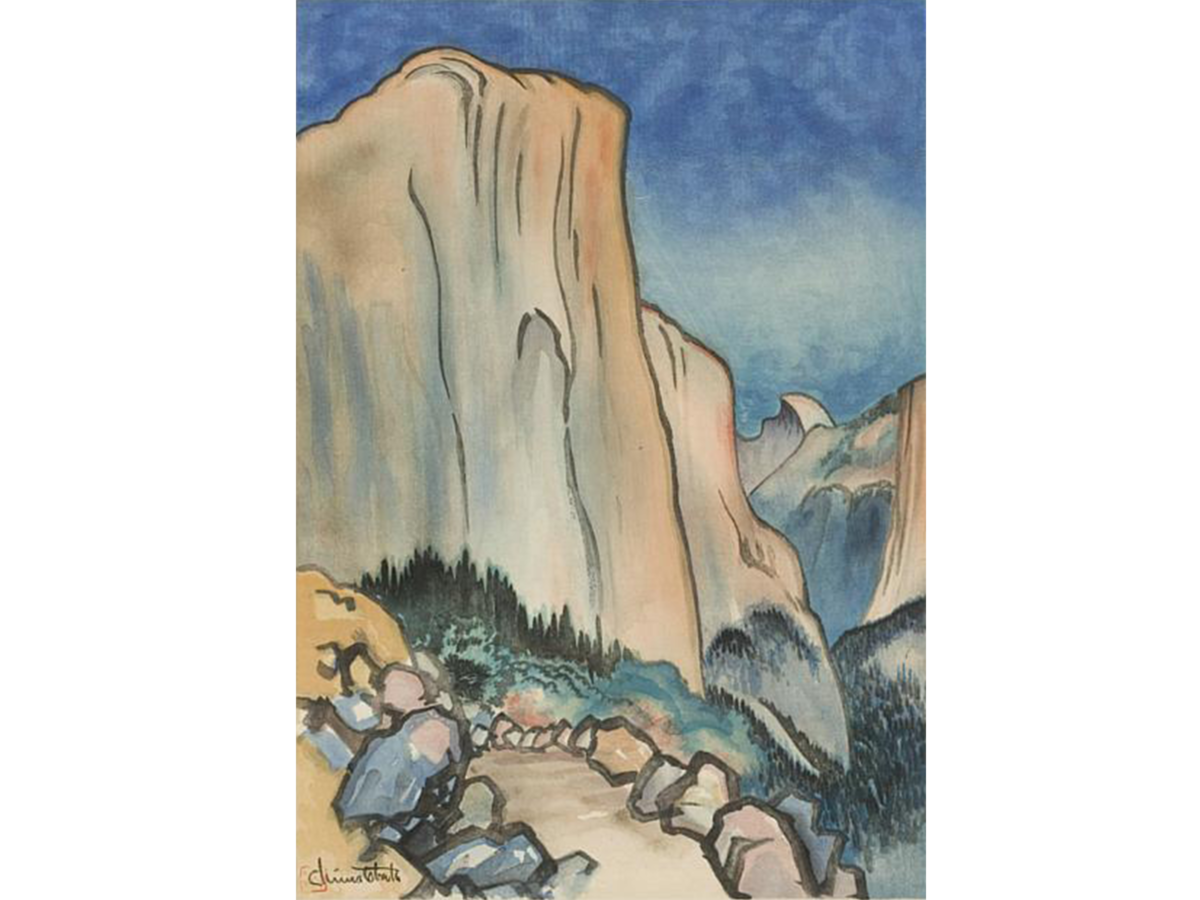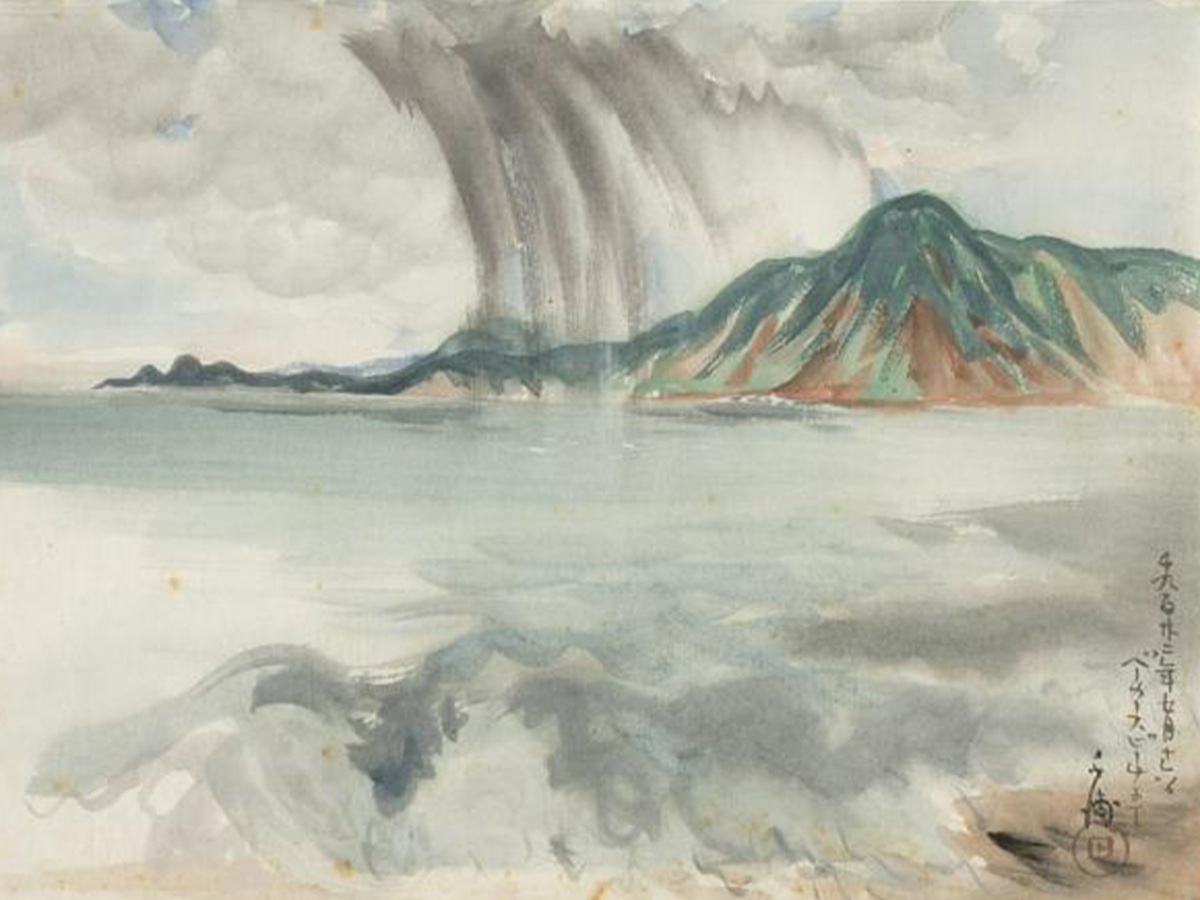Activity
Obata-Inspired Landscape Art
Objective: Students will study Chiura Obata’s signature landscape paintings and create individual works of art in his style, using textures from nature. Students will compare and contrast patterns, colors, and textures between their work and Obata’s.

View Works by Chiura Obata
Common Core Content Standards
K.VA:Re8–7.VA:Re8 Interpret art by analyzing art-making approaches, the characteristics of form and structure, relevant contextual information, subject matter, and use of media to identify ideas and mood conveyed.
1.VA:Re7.2 Compare images that represent the same subject.
5.VA:Cr2.3 Identify, describe, and visually document places and/or objects of personal significance.
K.MA:Cr1 Discover and share ideas for media artworks using play and/or experimentation.
1.MA:Cr3 a. Create, capture, and assemble media arts content for media arts productions,identifying basic aesthetic principles, such as pattern and repetition. Practice and identify the effects of making changes to the content, form, or presentation, in order to refine and complete media artworks.
6.MA:Cr3 Experiment with multiple approaches to produce content and components for determined purpose and meaning in media arts productions, utilizing a range of associated aesthetic principles, such as point of view and perspective. Appraise how elements and components can be altered for intentional effects and audience, and refine media artworks to reflect purpose and audience.
Materials
Tempera or watercolor paint
Paper
Paint brushes
Black pens or Sharpies
Materials from nature — rocks, acorns, leaves, wood chips, etc. — to be used as texture
Examples of landscape prints by Chiura Obata (download PDF from sidebar above)
Download the teacher packet from sidebar above for complete instructions.
Procedure
Introduction
- Begin by introducing Obata’s work and life story to students. Practice close looking at Obata’s signature landscape paintings. Use questions to direct conversation, such as the following:
- What colors do you notice? Are the colors bright or dark? What textures do you see? What lines or patterns do you notice? What are some things that you see in each painting? What is the artist painting in each of his artworks?
- Show students examples of Obata’s work either electronically or by physically distributing printouts to table groups.
- Ask students to brainstorm what they will create.
- Allow students to decide what landscape they will be painting (lake, trees, flowers, fields, mountains?).
- Ask students to decide what time of day and season will be represented in their paintings.
- Do a demonstration to show students how to begin their artwork.
- Do another demonstration on how to incorporate texture. Gently paint a leaf, piece of wood, rock, acorn, etc, and stamp on the page. Use multiple stamps to create a larger pattern.
- Get creative!
Art Project
- Distribute practice materials to students: scratch paper to begin and natural objects for texture.
- Provide time to sketch landscapes and practice texture before beginning the final project.
- Distribute final materials (paper, paint, black pens) once class is ready.
- Use a pencil or Sharpie pen to create outlines, before using paint.
- Add texture throughout student art pieces.
Discussion
- Ask students to describe what their favorite Obata artwork is. Were they inspired to use any of his techniques in their painting?
- Why do they think Obata painted nature so frequently?
Extensions
- Consider adding shading to your discussion and demonstration of art techniques.
- Consider exploring An Introduction to Chinese Brush Painting and discussing East Asia Ink techniques in relation to your project and to Obata’s sumi ink work.





